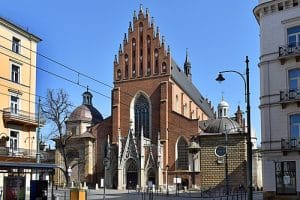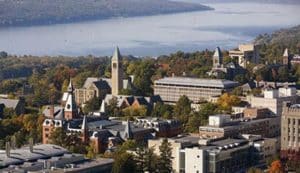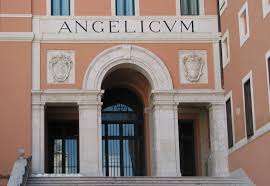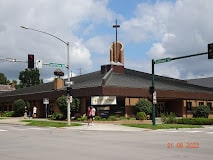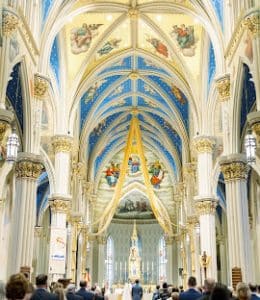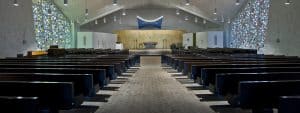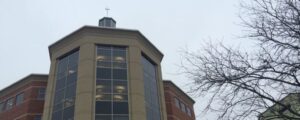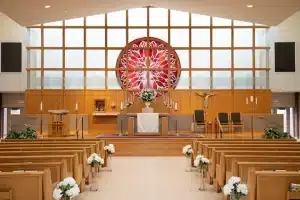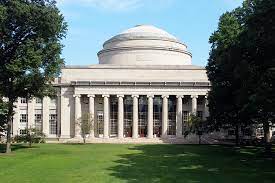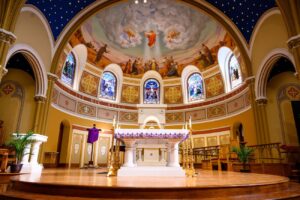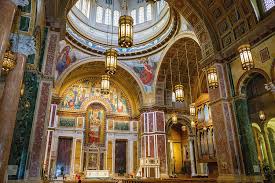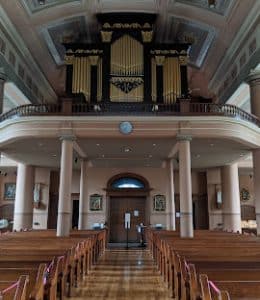Gold Masses
By promoting Gold Masses for Scientists around the world, SCS hopes to create spiritual fellowship among Catholic scientists and science educators at the local level.
Home Gold Masses
What is a Gold Mass?
The Society of Catholic Scientists sponsors Gold Masses for Scientists. This follows in the tradition of special Masses for members of particular professions. The oldest, the Red Mass for lawyers and lawmakers, was introduced in the 13th century. The first White Mass for health care professionals and Blue Mass for law enforcement personnel were begun in the 1930s. By promoting Gold Masses for Scientists around the world, SCS hopes to create spiritual fellowship among Catholic scientists, science educators and science students at the local level. A Gold Mass was held in Boston on November 15, 2016. See this article from The Boston Pilot for more info. In November of 2017, seven Gold Masses were celebrated around North America. During the 2021-2 academic year, about 25 Gold Masses were celebrated (a partial list can be found HERE) See below for information about upcoming Gold Masses.
Gold Masses are usually Votive Masses in honor of St. Albert the Great (patron saint of natural science), and use the readings and propers for his feast day (November 15). Many such Masses are celebrated on the feast day of St. Albert or near it. However, almost any time during the school year is possible. (A Votive Mass in honor of St. Albert can be said on days other than November 15 subject to liturgical norms. See sections 375 and 376 of the liturgical norms HERE ) Other particularly appropriate dates for a Gold Mass are the Feast day of St. Thomas Aquinas (January 28) and the Optional Memorial of St. John Henry Newman (October 9), where the readings for those Memorials would be used.
Gold Masses are meant to be regional events, bringing together Catholics from that region who are or have been involved with science, including scientists, retired or former scientists, science teachers at college, high school or grade school level, science graduate students, undergraduate science majors, and advanced high school students interested in science. (By “science”, we mean more generally STEM areas, i.e. in mathematics, computer science, biomedical research, etc.) Often, the homilist at the mass is a priest or deacon who is a scientist or has some science background, though that is not necessary. In some cases the bishop may agree to preside. After a Gold Mass there is normally a simple reception, with snacks, where those who attended the Mass can meet and socialize with each other. The hope is that these Gold Masses will help foster the development of local communities and networks of Catholics involved with science. Such communities and networks, in turn, may lead to collaborations on various projects, such as study groups and public lectures, or Catholic scientists visiting classes in Catholic schools.
A Gold Mass is easy to arrange. One needs: (a) a church or chapel, (b) a celebrant and homilist, (c) a nearby hall to hold the reception, and (d) permission of the local bishop. Often these masses are held at Catholic campus ministries of colleges or universities, and with their help and cooperation. Such masses should be advertised several weeks in advance through an article or ad in the diocesan paper, through local Catholic media, on local college campuses (especially flyers in STEM departments and announcements and flyers at Catholic campus ministries), in the science and math departments of local Catholic high schools, and in parish bulletins (dioceses can usually help with that). Information about upcoming Gold Masses will be posted on the SCS website. Though the above elements are the only things required for a Gold Mass, it is also possible to make the Gold Mass a more elaborate event, with a public lecture beforehand or afterwards. Examples of this are the Gold Masses held at the University of Notre Dame.
Those interested in planning a Gold Mass in their own city should contact Stephen M. Barr at smpbarr@gmail.com
